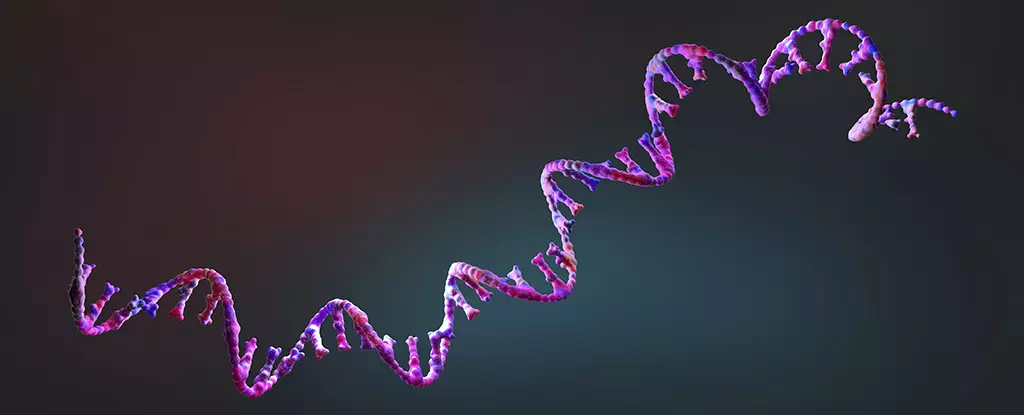The search for the origins of life on Earth is one of the most compelling scientific challenges we face. The crux of this enigma lies in comprehending how simple, reactive molecules transformed into complex structures capable of self-replication and evolution. Recent advancements in laboratory experiments have brought us closer to unveiling this mystery, particularly concerning the role of RNA and DNA in life’s early stages. As researchers delve into this ancient conundrum, they strive to recreate conditions similar to those of primordial Earth, raising vital questions about the molecular journey that led to the first living organisms.
Scientists from the Technical University of Munich have embarked on a bold venture to replicate the environmental settings of early Earth. Understanding how organic molecules came together to form significant biological compounds like RNA is crucial. In their experimental setup, the researchers utilized synthetic RNA-like units that displayed a remarkable ability to bond and evolve when subjected to high-energy conditions. Initially, these molecules exhibited a transient nature; they would form and break apart without fostering significant stability. However, an intriguing twist emerged when additional short strands of preformed DNA templates were introduced. This modification initiated a chain of reactions that enhanced molecular stability, paving the way for complex interactions to occur.
The Role of Templates in Stabilizing Complex Molecules
The introduction of DNA templates proved pivotal. By coupling RNA-like units with these templates, researchers observed an increased rate of complex molecule formation. The resulting double-stranded configurations not only extended the lifespan of these molecules but also showcased properties akin to natural selection—a significant milestone in understanding how life could have arisen from the chemical chaos of early Earth. As these molecules were capable of movement and replication, they likely formed structures that sustained themselves and interacted adaptively with their surroundings.
This revelation raises further questions about the dynamics of molecular interactions. By drawing parallels between the laboratory experiments and the presumed interactions on primordial Earth, scientists can infer the potential pathways through which simpler molecules could have organized into more complex systems. This interplay of stability and adaptation holds the key to comprehending the shoals of molecular life that might have thrived in Earth’s primordial environments.
As the experiments unfolded, another remarkable finding came to light: the DNA templates could influence the properties of surrounding membranes once the copying process began. This observation points to a more profound dynamic at play—a form of co-evolution where molecular structures not only replicate but also modify the environments that support them. Here, the concept of evolution does not merely apply to living organisms; rather, it extends to the very molecules that laid the groundwork for life itself.
Furthermore, the potential for RNA molecules to form their complementary strands introduces the possibility of further complexity and adaptability. This opportunity for self-complementation exemplifies the intricate dance of molecular interactions that may have characterized the early biotic world, urging scientists to probe deeper into the origins of these fundamental processes.
The origin of life remains an enigmatic and multifaceted subject, spurring countless hypotheses and research directions. Each new discovery contributes a piece to this grand puzzle, underscoring the relentless quest for understanding life’s formation. The latest findings not only enhance our grasp of RNA’s evolutionary potential but also accentuate DNA’s crucial role in stabilizing primordial chemistry.
As scientists continue to leverage modern techniques to simulate ancient conditions, they reflect upon the journey of molecular evolution—an intricate saga characterized by adaptation, interaction, and complexity. In a world where time was measured in billions of years, the accelerated pace of present-day explorations may illuminate the shadows of our planetary past more brightly than ever before. “We didn’t have millions of years available and wanted an answer quickly,” explains chemist Job Boekhoven, encapsulating the spirit of modern scientific inquiry.
As researchers navigate the complexities of molecular interactions and their implications for life’s beginnings, the potential for further discoveries remains limitless. Each insight gained brings us closer to understanding the remarkable narrative of the origins of life— an eternal dialogue between science and the unfolding mysteries of our existence.


Leave a Reply